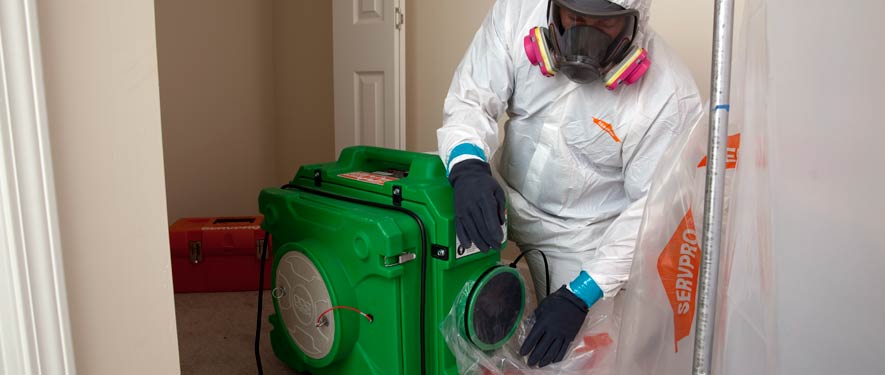
Sewage Cleanup and Restoration
Sewage is used water. Whenever water leaves your home or business through the use of toilets or appliances that water is introduced into the sewage system. The sewage system is meant to be a one-way system, designed to move in one direction — away from your home!
Unfortunately, this is not always the case. The sewage at your building sometimes moves the wrong direction and is reintroduced into your space in a less than desirable way.
Below we list three different types of water as separated into categories: clean water (category 1), gray water (category 2) and black water (category 3). Scroll down to learn more.
But, as is implied above different types of sewage have different levels of risk and danger. As a general rule all sewage should be considered unsafe and contaminated and very dangerous stuff! It may contain bacteria and viruses that could cause serious illness. Caution is the rule.
Cleaning sewage requires delicacy and technique. Our SERVPRO of South Philadelphia/SE Delaware County team has the training and tools to address sewage clean-up with safety and precision.
So, don’t risk it! Call us and let us help you, (610) 237-9700
Sewage Backup or Toilet Overflow? Call Us Today – (610) 237-9700
There are three major types of contaminated water. SERVPRO of South Philadelphia / SE Delaware County will inspect that contaminated water to determine the type of water and then plan the appropriate response to safely restore your home or business.
The three types of contaminated water:
Category 1: "Clean Water"
This is water from a clean source, such as a broken clean water supply line or faucet. If left untreated, category 1 water can quickly degrade into category 2 or 3 water depending upon such factors as time, temperature, and contact with contaminants.
- Water from a clean source like a broken water line
- If left untreated, can degrade into category 2 or 3
Category 2: "Gray Water"
This water has a significant level of contamination that could cause discomfort or illness if ingested. Sources for category 2 water may include washing machine overflow; toilet overflow with some urine, but no feces; or dishwasher overflow.
- May contain bacteria and viruses
- Can quickly degrade into category 3 if left untreated
Category 3: "Black Water"
This water is grossly unsanitary and could cause severe illness or death if ingested, and any contact should be avoided. Sources for category 3 water could include flooding from rivers or streams, water from beyond the toilet trap, water from the toilet bowl with feces, or standing water that has begun to support microbial growth.
- May contain untreated sewage, harsh chemicals, and microbes
- Water from flooding rivers or sewer backup
24 Emergency Service
Sewage backup should be considered an emergency and dealt with as quickly as possible. We are the water damage restoration specialists with specific training and expertise to safely restore your home or business.






 24/7 Emergency Service
24/7 Emergency Service


